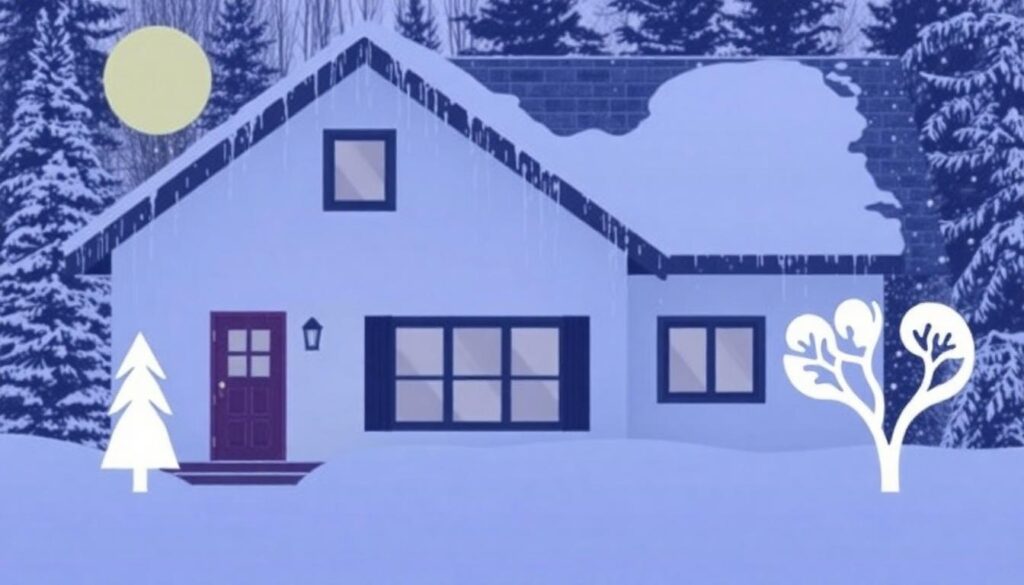Protecting your home from the elements is an ongoing responsibility that pays dividends in the long run. From extreme temperatures and heavy rainfall to high winds and snow, your home faces a variety of environmental challenges each season. When left unchecked, these forces can lead to structural damage, energy inefficiency, and costly repairs. However, with proactive measures and smart planning, you can safeguard your home year-round, preserving both its integrity and value.
In this article, we’ll provide you with a structured, practical guide on how to protect your home from the elements in all four seasons, covering everything from insulation and waterproofing to landscape design and maintenance. By following these strategies, you can ensure that your home remains safe, efficient, and comfortable, regardless of the weather outside.
Optimize Insulation for Year-Round Comfort
While insulation is often thought of as a winter essential, it plays an equally crucial role in regulating temperatures during the summer months. Proper insulation helps maintain a comfortable indoor environment, reduces the need for heating and cooling, and protects your home from temperature extremes.
Key Areas to Insulate:
- Attic: As heat rises, a poorly insulated attic can allow significant temperature fluctuations. Insulate your attic to prevent heat from escaping in the winter and reduce heat gain in summer.
- Walls and Floors: Insulating walls and floors, particularly in unfinished spaces such as basements and crawl spaces, helps stabilize your home’s interior temperature and boosts energy efficiency.
- Windows and Doors: Weatherstripping around windows and doors minimizes drafts, keeping conditioned air inside and outdoor air outside.
Additional Tips:
- Upgrade to Reflective Insulation: In hot climates, reflective or radiant barrier insulation in the attic can deflect heat away from the home, lowering cooling costs in the summer.
- Install Radiant Floor Heating: In cold climates, radiant floor heating in bathrooms or kitchens ensures consistent warmth and helps minimize energy use.
Storm Protection: Impact-Resistant Windows and Storm Shutters

Homes in areas prone to hurricanes, tornadoes, or severe storms can benefit from additional protection for windows and doors. High winds, flying debris, and torrential rain can cause catastrophic damage if proper precautions are not taken.
Impact-Resistant Windows:
- Impact-resistant windows are designed to withstand high winds and flying debris. These windows are made with laminated glass that holds together even if the glass shatters, preventing intrusions from the outside.
- Benefits: Besides storm protection, impact windows also provide improved insulation, noise reduction, and UV filtering, which helps preserve the longevity of furniture and interior decor.
Storm Shutters:
- Accordion or Roll-Down Shutters: For added protection, install storm shutters that can be manually or automatically deployed when bad weather is forecasted.
- Fixed Panel Shutters: In high-risk areas, permanent storm shutters provide a robust barrier against harsh weather conditions.
Regular Roof Maintenance and Protection
Your roof is your home’s primary defense against rain, snow, and extreme temperatures. Proper maintenance is essential to ensuring that it remains intact and performs optimally over time.
Roof Inspection and Maintenance:
- Annual Inspections: Hire a professional to inspect your roof annually, especially after severe weather events, for any signs of wear or damage.
- Replace Damaged Shingles: Missing or cracked shingles can expose your roof to water damage. Ensure that any damaged shingles are replaced promptly to prevent leaks.
- Clear Debris: Regularly clean leaves, branches, and other debris from the roof and gutters to avoid water backup, which can lead to leaks and mold growth.
Additional Roof Protection:
- In areas with hot summers or harsh winters, roof coatings can be a game-changer. Imagine a protective layer that not only shields your roof from intense sunlight but also prevents costly water infiltration during the winter months. The secret to achieving long-term roof protection lies in consulting a roof coating specialist, who can assess your shingles and apply the right coatings to safeguard your home for years to come.
- To ensure that your roof remains well-protected, you may also want to consider the use of reflective coatings, especially if you live in an area prone to high temperatures. This added layer can significantly reduce the amount of heat your roof absorbs, helping keep your home cooler in the summer months. A roof coating specialist can guide you in choosing the right reflective coating for your roof’s specific needs.
Strategic Landscaping for Weather Resilience

Landscaping not only enhances your home’s curb appeal but also plays a critical role in defending your property against the elements. Proper landscaping can help direct water away from your foundation, reduce erosion, and protect your home from high winds.
Landscaping Strategies:
- Rain Gardens and Drains: Create a rain garden in low-lying areas to capture and redirect rainwater. Install French drains around your foundation to prevent water accumulation.
- Windbreaks: If you live in a region prone to high winds, plant dense evergreen shrubs or trees around your property to act as windbreaks, reducing the force of winds on your home.
- Grading: Ensure that the ground slopes away from your home’s foundation. Proper grading helps prevent water from pooling around your home, which can lead to foundation damage.
Energy-Efficient Doors and Windows
Energy-efficient windows and doors are essential for reducing energy consumption and protecting your home from the effects of extreme temperatures. These fixtures not only improve comfort but also provide protection against moisture and UV damage.
Benefits of Energy-Efficient Windows:
- Insulation: Double or triple-paned windows with gas fills (like argon) help insulate your home, reducing heating and cooling needs.
- UV Protection: Low-emissivity (Low-E) windows block UV rays, protecting furniture, carpets, and walls from fading while also enhancing indoor comfort.
- Soundproofing: For homes in noisy areas, energy-efficient windows help mitigate sound transmission, ensuring a quieter living space.
Energy-Efficient Doors:
- Insulated Doors: Choose insulated entry doors and patio doors to reduce heat loss and improve security. Look for doors with high R-values for better thermal performance.
- Seals and Weatherstripping: Regularly check and replace seals around doors and windows to keep drafts and moisture at bay.
Exterior Sealants and Water Repellents
Exposed to rain, snow, and humidity, your home’s exterior surfaces (brick, wood, concrete) can become vulnerable to water damage over time. Applying sealants and water repellents can help protect these materials from moisture intrusion and preserve their structural integrity.
Types of Exterior Protection:
- Silicone Sealants: Use silicone-based sealants to fill gaps around windows, doors, and joints in your home’s exterior. These sealants prevent moisture from entering and help maintain the home’s airtight seal.
- Hydrophobic Coatings: These coatings make exterior surfaces water-resistant, preventing damage to your foundation, walls, and masonry.
Surge Protection for Electrical Systems
Lightning strikes, power surges, and electrical storms can cause serious damage to your home’s electrical systems and appliances. Installing a whole-house surge protector is a smart investment in protecting your home’s electrical infrastructure.
Surge Protector Benefits:
- Protection Against Power Surges: A whole-house surge protector defends against unexpected voltage spikes caused by storms or electrical grid failures, safeguarding sensitive equipment like computers and appliances.
- Peace of Mind: Surge protectors prevent costly repairs by stopping surges from reaching your electrical panel and circuits.
Create a Long-Term Home Maintenance Plan
Seasonal maintenance is essential for protecting your home from the elements. By creating a maintenance checklist, you can address potential issues before they become costly problems.
Seasonal Maintenance Checklist:
- Spring: Conduct a thorough inspection of your roof, gutters, and foundation for any damage caused by winter weather. Trim overhanging trees and bushes to prevent them from posing a risk during summer storms.
- Summer: Check your air conditioning system, inspect the attic for proper ventilation, and replace weatherstripping on doors and windows.
- Fall: Clean gutters, inspect insulation, and prepare your heating system for winter. Check for cracks or gaps around windows and doors.
- Winter: Ensure your home is protected from frozen pipes, ice dams, and other winter-related damage. Maintain your heating system and inspect your home for drafts.
Conclusion
Protecting your home from the elements is an ongoing task that requires vigilance, planning, and the right investments. By optimizing insulation, investing in storm protection, maintaining your roof, and using smart technology to monitor potential threats, you can keep your home safe, efficient, and comfortable all year long.
Through regular maintenance and strategic upgrades, you ensure that your home can withstand whatever the weather throws its way—preserving its value and enhancing your peace of mind for years to come.
Stay connected for the latest news and updates on Luxe Pioneer
